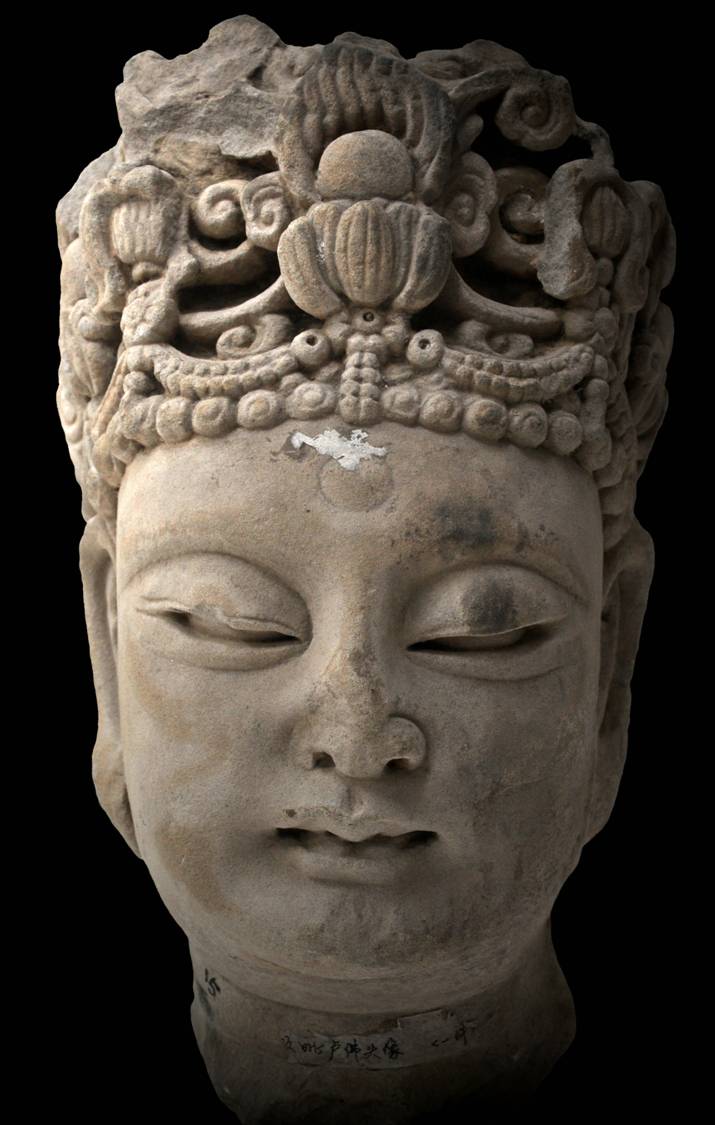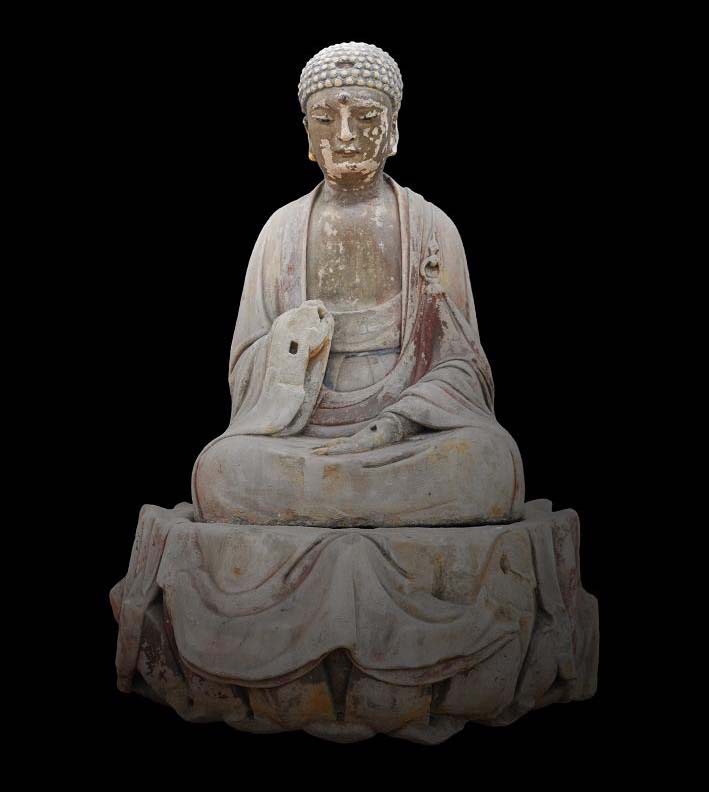The Buddhas are as many as the sands of the Ganges River: Carved inscription at Baodingshan, Dazu, AD 1177-1249
, 16 March 2011
May 2010. I’m standing next to the largest head I’ve ever seen. Carved in sandstone and painted, it belongs to the vast reclining Buddha at the heart of the Baodingshan cave temple. Baodingshan, ‘Summit of Treasures’, is the most impressive of the seventy-five rock-carved temple sites that make up the Dazu World Heritage Site in south-west China. 10,000 individual figures populate its 500m-long tree-shaded sandstone cliff, all carved between AD1177 and 1249.
The experience is overwhelming. I’m astonished by the sheer ambition of this Buddhist complex, by the sophisticated imagination that planned it, by the skills of the artists that fashioned it. I’m here with colleague Steve Howe to plan an exhibition of Dazu carvings at the National Museum in Cardiff early in 2011, and I’m wondering how we are going to convey the magic of these places to our visitors.
This visit to Dazu was my first time back in China since working there in the mid 1980s. China had changed hugely, of course, and the pace of change is as breathtaking as the ferociously spiced Sichuanese food (the best in China, in my view) which our generous hosts pressed on us at every opportunity. The most important things, however – the sociability of the people, their rightful pride in a distinguished cultural heritage – remain undimmed.
Our week’s work with colleagues at the Dazu Rock Carvings Museum developed a warm and trusting friendship, along with the realisation that we had an opportunity to create something really special back in Cardiff. Dazu, after all, represents the last great flourishing of the cave-temple art form and its treasures of Song-dynasty (AD960-1279) sculpture had never been seen outside China before.
Back in Wales, the whole exhibition team rose enthusiastically to the challenge and, under serious time pressure, captured the serene drama of visiting a rock-carved cave temple. The exquisite beauty of the carvings, something both spiritual and deeply human, shines out. From a number of favourite pieces, I would highlight the meditating figure of Zhao Zhifeng, the designer of the Baodingshan complex, and, in complete contrast, the charmingly characterised family group from a tomb complete with serious father, delighted mother and two naughty children. Pride of place, though, goes to the central Sakyamuni Buddha, whose authoritative dignity greets visitors to the exhibition and provides a profoundly spiritual focus for the whole experience.
I was particularly pleased to see the delight of our Chinese colleagues at the results, but equally so to see the enthusiasm of so many visitors of all kinds, whether people from Cardiff or China, specialists or local school children. If the multitude of Buddhist figures and schools of thought, and their interweaving with Confucian and Daoist ideas, all seem like too much to grasp, not to worry. Just enjoy the spectacle and take heart from another Dazu inscription that expresses the essential simplicity of Buddhist thinking: ‘to know clearly means that there is nothing to know’.
Andrew Renton, Head of Applied Art, National Museum Cardiff


